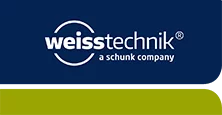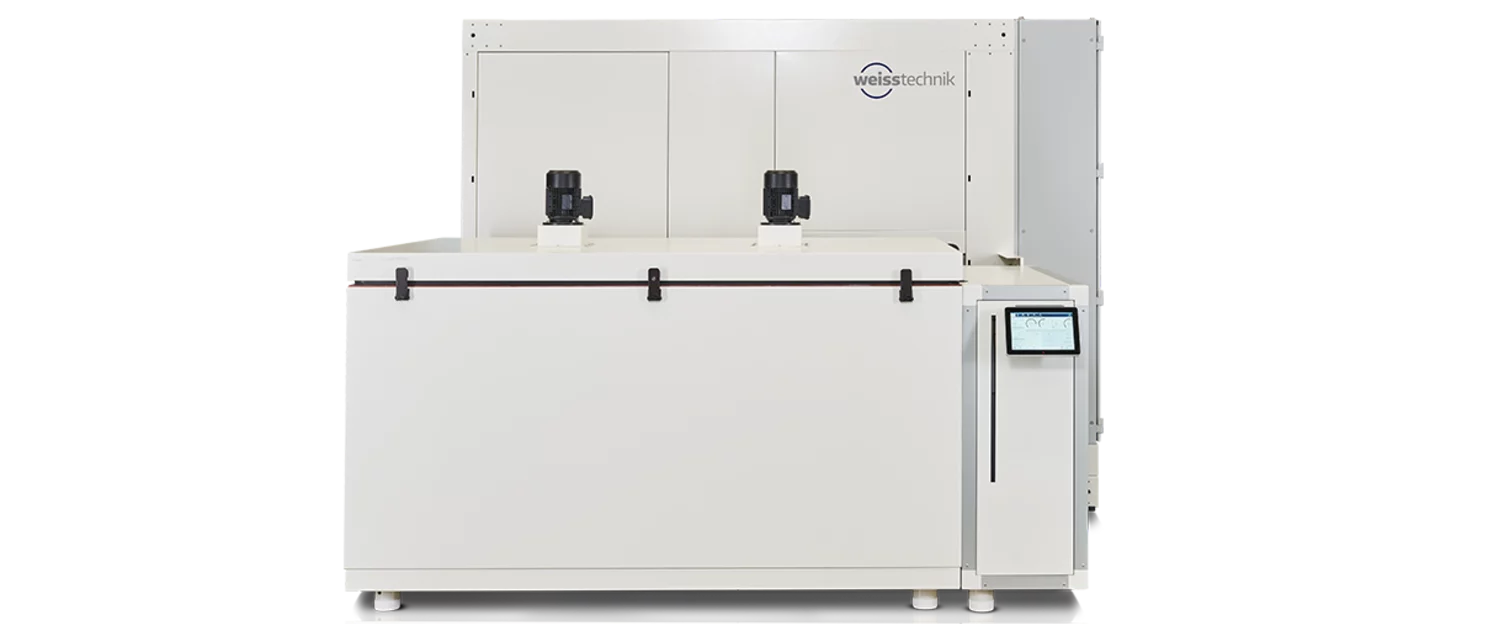Why
- Test standards for building and construction materials
- Cyclical alternating tests
Freeze-thaw alternating tests
How
- Individual programming for standards
- CO2 refrigerant (GWP 1)
- Robust test chests
What
- Two standard sizes
- Modular construction
- Optional additional equipment
Why/the challenge
Building materials such as concrete slabs, bricks, insulating materials, and tiles must fulfil high quality and safety standards. This is tested in accordance with various national and international standards. This always involves the influences of changing temperatures and humidity.
Because of climate change and the increasing frequency of extreme weather events, the demands on many building materials will continue to rise. As a result, testing in robustly designed and reliably operating building material test chests will become even more important.
In cyclical alternating tests, building materials are subjected to testing as specified in the respective standard. Temperature curves, number of test cycles and holding times are clearly defined.
How/the idea
In order to cover the requirements of as many test standards as possible, building material test chests have been developed in two standard sizes: 500 and 1,000 l. The test programmes can be adapted to the respective test standard.
The robust chest ovens feature a corrosion-resistant stainless steel test space, which can be easily loaded from above using lifting equipment. An integrated flooding device enables automatic water inlet and outlet with an infinitely adjustable flooding height in the test space.
The unit section, which includes the refrigeration unit, switch cabinet/control section, and water supply installations, is positioned separately – either directly next to (small unit section) or behind the chest oven (large unit section).
Air circulation conditioning with two powerful fans in the chest oven lid ensures high temperature accuracy. To ensure homogeneous temperature distribution throughout the test space, the air is fed into the test space from below through the removable floor grilles.
What/the solution
TempEvent building material test chests WBT/500/-30//+60 and WBT/1000/-30/+60
The building material test chests are available with a test space volume of 500 or 1,000 l. The cooling aggregate and system control are housed in the separately installed unit section. The refrigeration unit uses the environmentally friendly refrigerant CO2 with a GWP value of 1, which fulfils all the requirements of the EU Refrigerant Regulation.
The chest ovens achieve test temperatures of −30–60°C with a deviation of ± 1 K over time. Test scenarios such as freeze-thaw alternating tests with water flooding (for thawing) can be carried out with the standard equipment.
The system is controlled via the SIMPAC® digital measurement and regulation system and the WEBSeason® software. The test cycle for the ordered test standards is stored in the PLC of the SIMPAC® control system so that the test chest fulfils the specifications of the respective test standard reliably and reproducibly. If required, several test programmes can be stored.
Additional options are also available. These include the larger unit section with integrated water reservoir (1,100 or 1,500 l) to minimise the fresh water requirement, flow heater and circulation pump for water heating, flow cooler for water cooling, and sensors (PT 100 probes) for temperature measurement on or in the test specimen as well as temperature-controlled or non-temperature-controlled water spraying devices.
Your advantages at a glance
-
Robust test chest for a wide range of building materials
-
Two common sizes (500 and 1,000 l)
-
For German and international test standards
-
Temperature range: −30–60°C
-
Homogeneous temperature distribution
-
Sustainable refrigerant CO2
-
Clear 10″ colour touch control panel
-
Ethernet interface
Fig.: TempEvent WBT/500/-30/+60
TempEvent WBT/1000/-30/+60

